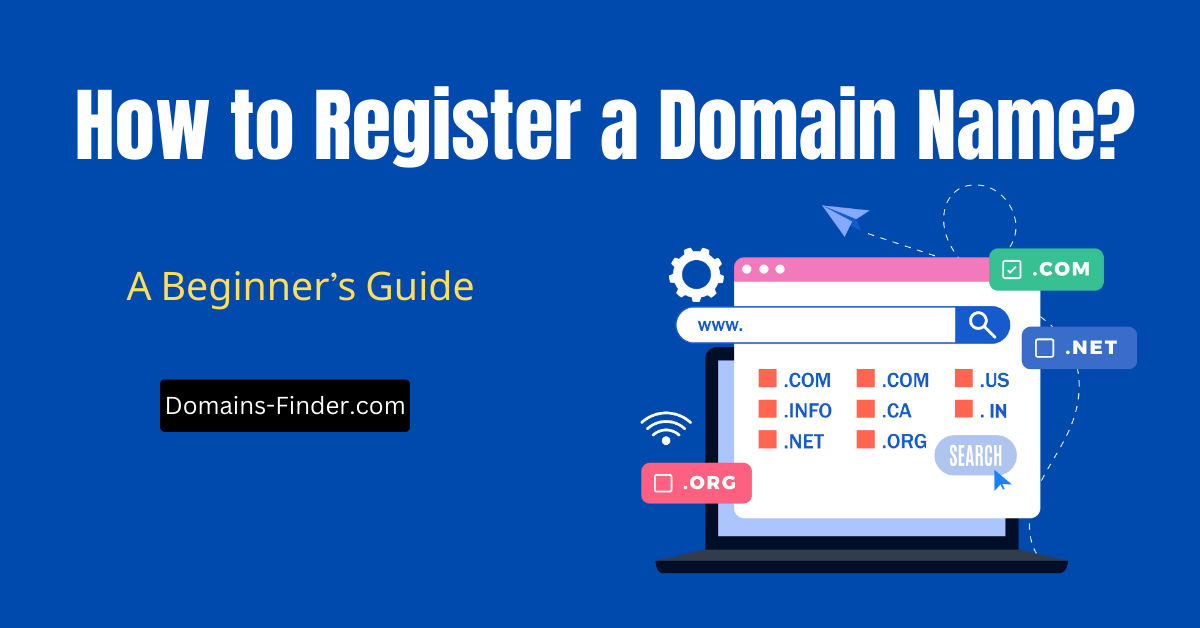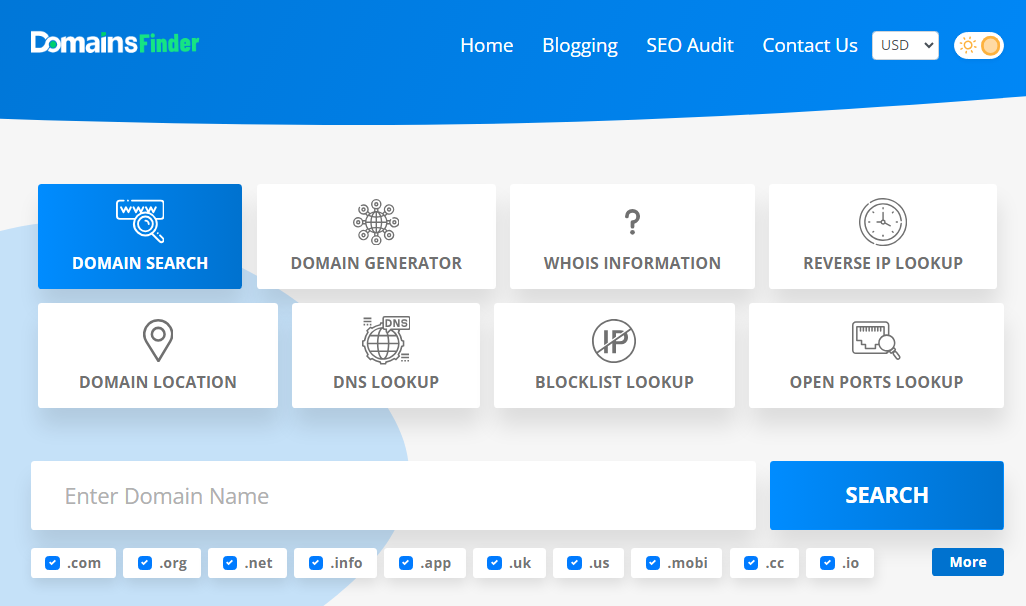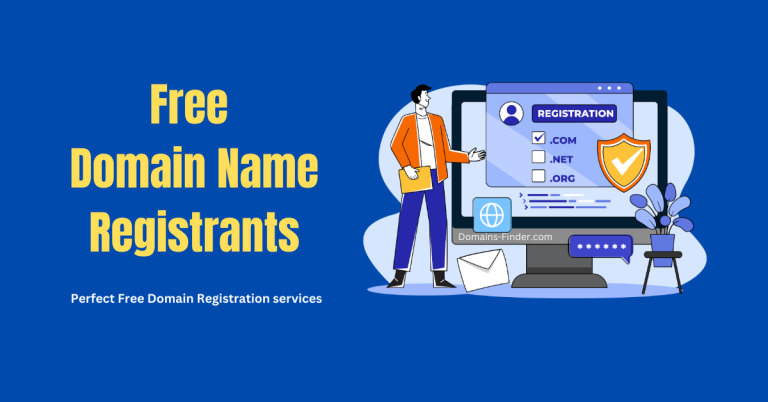How to Register a Domain Name: A Beginner’s Guide

Are you planning to register a domain name? Did you know that over 1.5 billion websites exist today? Every one of them has a unique domain name, and choosing the right one is critical to standing out online. Whether you’re starting a blog, a business website, or even a personal portfolio, registering a domain name is your first step toward building an online presence.
In this guide, we’ll break down everything you need to know about registering a domain name—from understanding what it is to securing it with a trusted registrar. Let’s dive into the details so you can confidently register your domain and kickstart your online journey!
1. Understanding Domain Names

A domain name is the web address people use to find your website. It represents your online identity, much like an address represents a physical location. Domain names are linked to numeric IP addresses, making them easier for people to remember.
Common types include Top-Level Domains (TLDs) like .com, .org, and .net, and country-code TLDs (ccTLDs) like .uk and .ca. Choosing a relevant, easy-to-remember domain name is key to building a successful online presence.
- A domain name is your website’s unique address.
- TLDs include .com, .org, and more.
- ccTLDs represent country-specific domains (e.g., .uk).
- Keep domain names simple and memorable.
- Consider including keywords for SEO purposes.
2. Choosing the Right Domain Name

When picking a domain name, brainstorm ideas related to your brand, services, or niche. Keep it short and easy to remember, aiming for around 6–14 characters.
Shorter names reduce the chance of typos and are more memorable. Try to include relevant keywords without sacrificing creativity. Ensure your domain is unique to stand out from competitors.
- Brainstorm ideas related to your niche or brand.
- Keep the name short, around 6–14 characters.
- Include relevant keywords for SEO.
- Ensure the domain is unique and not too similar to competitors.
- Avoid complicated spellings or unusual characters.
3. Checking Domain Name Availability

Once you have some domain name ideas, check if they’re available using a domain registrar’s search tool (e.g., GoDaddy, Namecheap). If your desired domain is taken, explore variations or alternatives.
You can also check the WHOIS database to see if the domain is owned and potentially for sale. Consider minor tweaks to find a name that fits.
- Use a registrar’s search tool to check availability.
- If unavailable, explore variations or alternatives.
- Use the WHOIS database to check ownership or availability.
- Consider minor tweaks for similar domain names.
- Check for premium domain options if they fit your budget.
4. Selecting a Domain Registrar

Choosing a domain registrar involves looking for competitive pricing, reliable customer support, and useful features like privacy protection.

Avoid registrars with hidden fees and prioritize those offering 24/7 support. Additional features such as domain privacy protection and DNS management are important to consider for long-term management.
- Look for competitive pricing with no hidden fees.
- Prioritize registrars offering 24/7 customer support.
- Choose additional features like privacy protection.
- Ensure they provide DNS management options.
- Research the registry’s reputation through reviews.
5. Registering Your Domain Name

Registering your domain name is a straightforward process. Use the registrar’s search bar, fill in your contact details, and choose your registration length. Opt for privacy protection (WHOIS protection) to keep your personal information private. Complete the payment process, and once confirmed, your domain is registered and ready for use.
- Enter your domain name in the registrar’s search bar.
- Fill out your contact information.
- Choose your registration length (1–10 years).
- Opt for domain privacy protection (WHOIS).
- Complete the payment and confirm registration.
6. After Registration: Next Steps
Once your domain is registered, the next steps involve setting up DNS to point to your hosting provider. Link your domain to a reliable hosting provider, ensure auto-renewal is enabled to avoid expiration, and begin building your website using a platform of your choice.
- Set up DNS to point to your web host.
- Link your domain to a hosting provider.
- Enable auto-renewal to avoid expiration.
- Start building your website on a platform (e.g., WordPress).
- Keep your domain secure and manage it carefully.
Frequently Asked Questions (FAQs)
What is a domain name, and why do I need one?
A domain name is the address people use to find your website on the internet (e.g., domains-finder.com). You need one to create a professional web presence, making it easy for people to find and access your site.
How do I register a domain name?
To register a domain name, choose a reputable registrar (e.g., NameSilo or GoDaddy), search for your desired domain, ensure it’s available, and follow the registration process by providing your details and paying the fee.
How long does domain registration last, and can I renew it?
Most domain registrations last for 1 year, but you can choose to register it for up to 10 years. Before the registration period ends, you can renew your domain to retain ownership.
Can I transfer my domain name to another registrar?
Yes, you can transfer your domain to a different registrar if you’re not satisfied with your current provider. The process typically involves unlocking the domain and following the transfer procedure at both your current and new registrars.
What’s the difference between a free and a paid domain name?
A free domain name often comes with limitations such as advertising or lack of control, while a paid domain gives you full control, better features like privacy protection, and a professional image.
Final words on Domain registration
Registering a domain name is the crucial first step to building your online presence. Whether you’re creating a personal blog, launching a business, or developing an e-commerce platform, securing a domain lays the foundation for your digital journey. It starts with brainstorming a unique and relevant domain name that reflects your brand identity. From there, choosing the right domain registrar and ensuring it fits your budget and feature requirements is essential.
Once you’ve found the perfect name, following a smooth registration process will guarantee that your domain is locked in for you and not available to others. Additionally, consider securing domain privacy protection and ensuring your registrar offers easy domain management tools.
By securing your domain, you’re not just getting an online address; you’re laying the groundwork for your digital identity. A well-chosen and properly registered domain allows you to build a lasting online presence, giving you credibility and control over your website. With your domain secured, you’re now ready to establish a brand that can make a lasting online impact in an increasingly competitive digital landscape.
In summary, domain registration is a vital part of your online strategy, and ensuring you take the proper steps from brainstorming to finalizing the process will set you up for long-term success online.
Discover more from Domains Finder
Subscribe to get the latest posts sent to your email.
